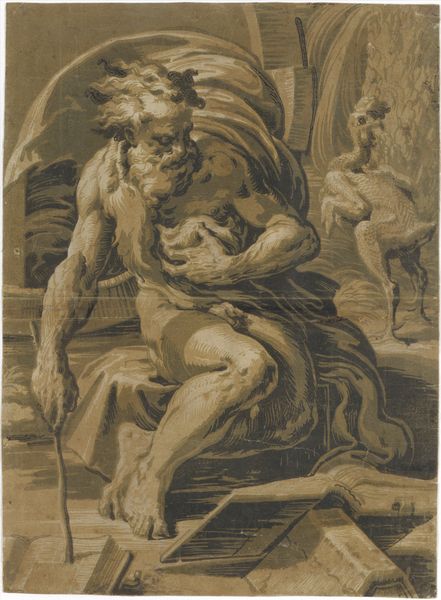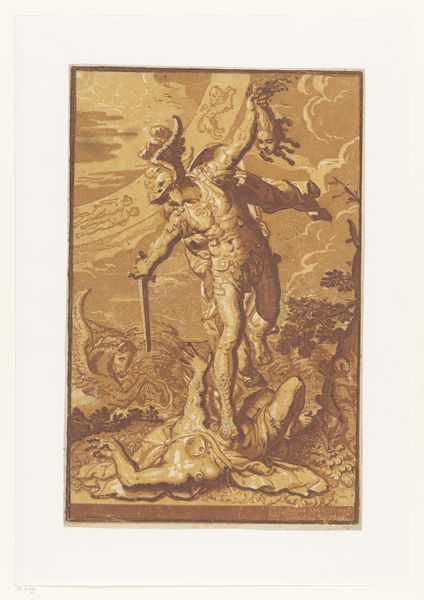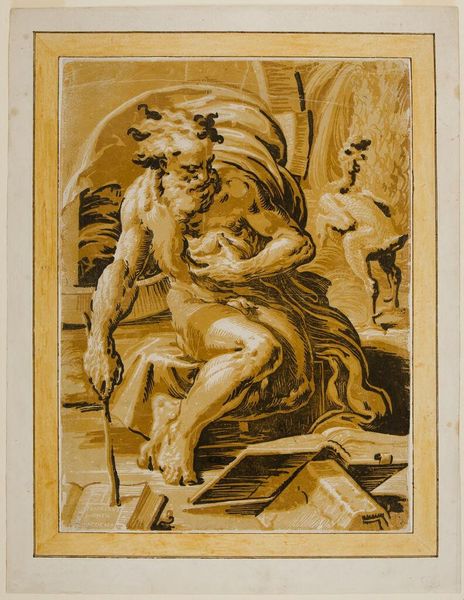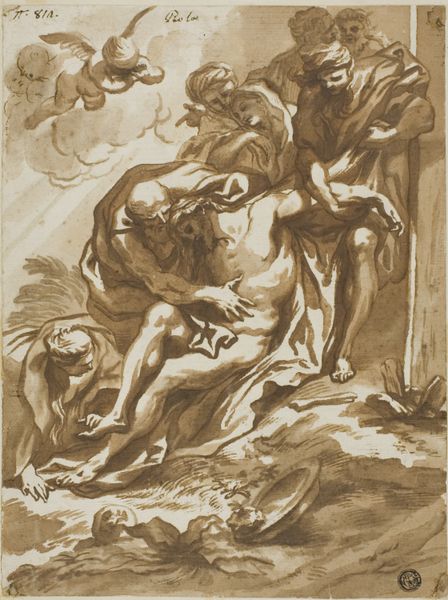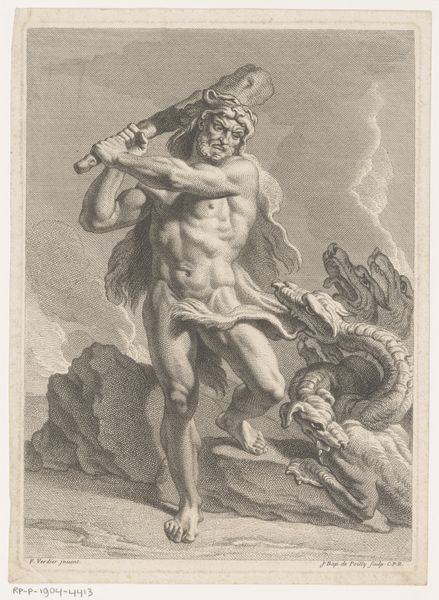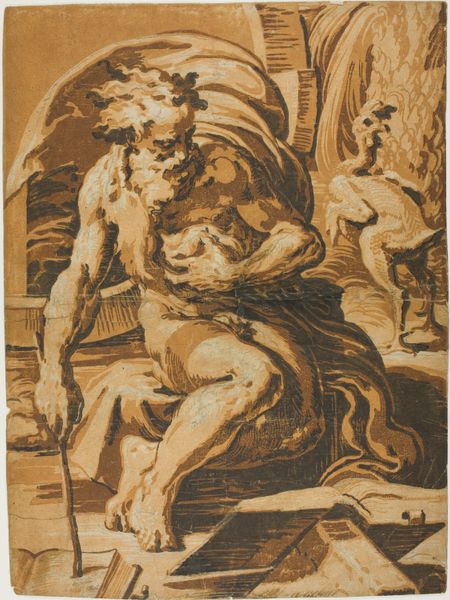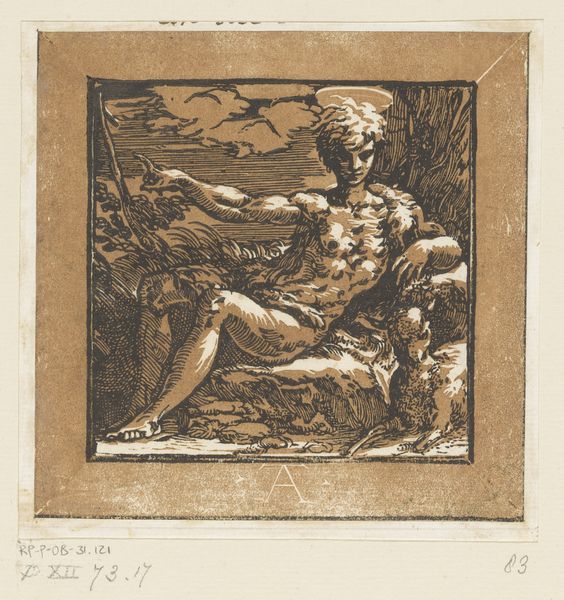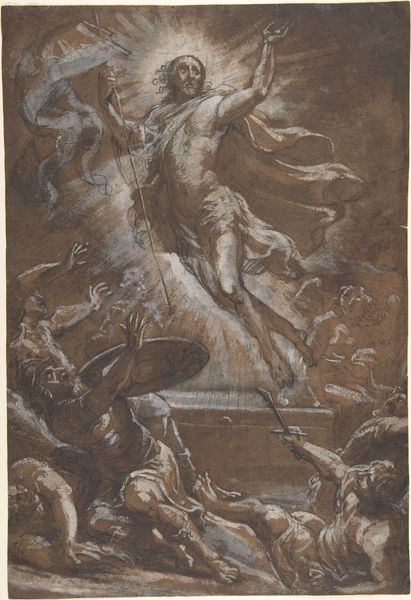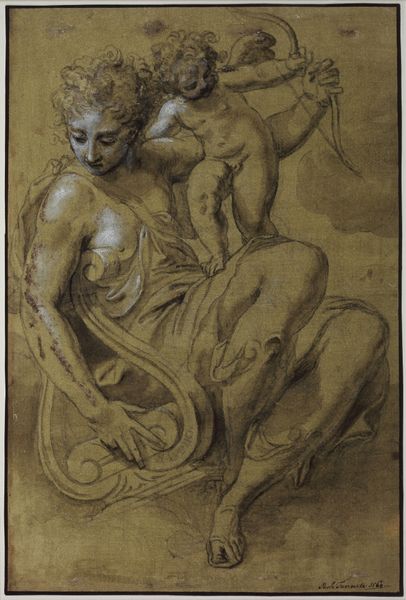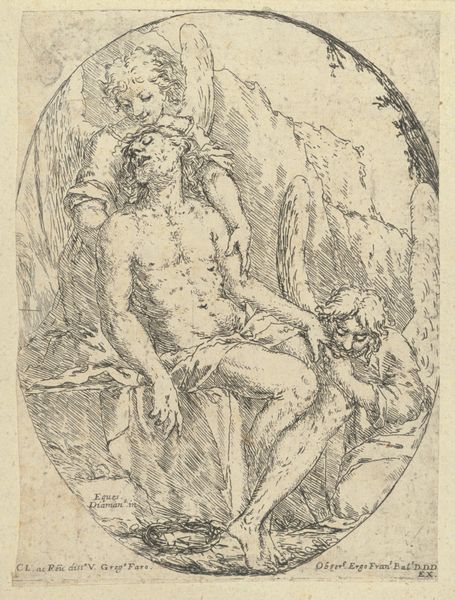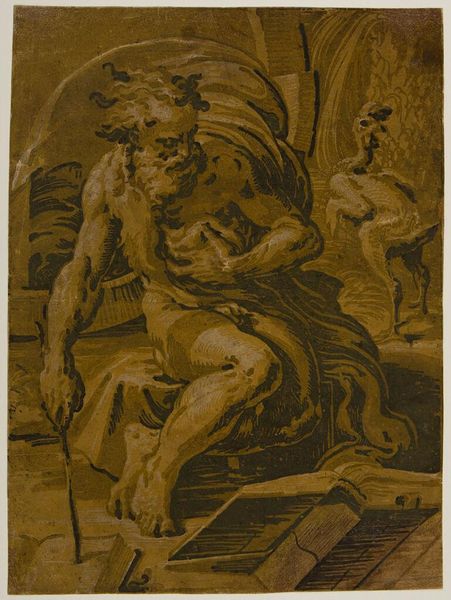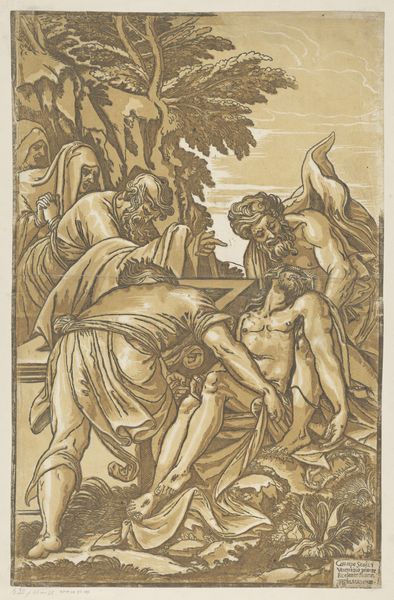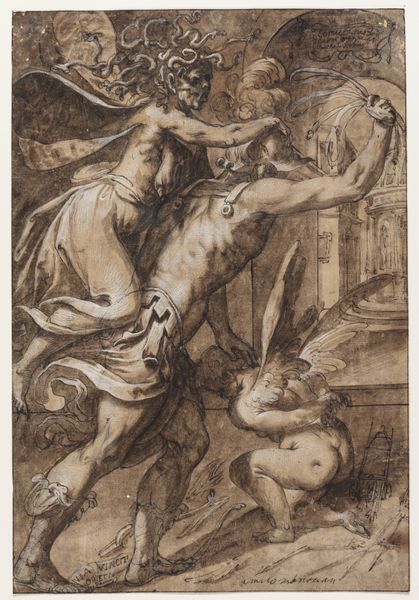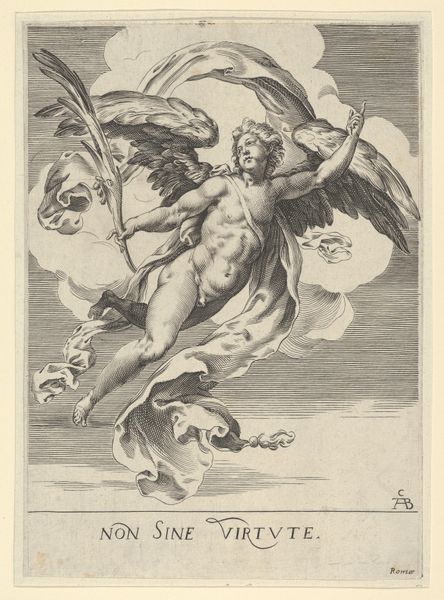
drawing, charcoal
#
portrait
#
drawing
#
caricature
#
charcoal drawing
#
figuration
#
11_renaissance
#
portrait drawing
#
charcoal
#
history-painting
#
portrait art
#
fine art portrait
Dimensions: height 482 mm, width 346 mm
Copyright: Rijks Museum: Open Domain
Editor: This is Ugo da Carpi's "Diogenes," created sometime between 1502 and 1532. It’s a charcoal drawing, and I find the monochrome palette quite striking, almost dreamlike. The figure seems caught in a moment of contemplation, but I am unsure what that entails. How do you interpret this work? Curator: Ah, yes, a Renaissance depiction of Diogenes. Carpi's captured a spirit more than a likeness, wouldn't you say? Diogenes was the ultimate contrarian, living in a tub, challenging societal norms with relentless honesty. The texture Carpi coaxes from the charcoal--it almost breathes, doesn't it? And the deliberate messiness...it mirrors Diogenes' rejection of order. Tell me, what details strike you first? Editor: I think the cooked chicken really stands out – it looks bizarre next to Diogenes! Also, the posture seems to exaggerate the subject's humanity, both his intellect and vulnerability. Curator: The plucked chicken! It is quite a humorous visual element, and, if I remember correctly, an unsubtle comment on Plato’s definition of man. Indeed! Look at the almost furrowed brow. To me, it speaks of both profound thought and…disappointment, perhaps? Does it evoke similar ideas for you? Editor: I never thought of that connection with Plato before! Maybe I am overly idealistic in my studies, but seeing this representation of a philosophical figure certainly broadens my perspective. Curator: Precisely. Art, you see, holds a mirror to the soul – a funhouse mirror sometimes, perhaps, but a reflection nonetheless. Art constantly invites me to reimagine. I wonder, is there a little Diogenes in us all? Editor: I think there is. Thanks, that’s given me a lot to think about!
Comments
rijksmuseum about 2 years ago
⋮
The Greek philosopher Diogenes is depicted here with a plucked chicken. This was his mocking reaction to Plato’s definition of man as a featherless biped. Ugo da Carpi made this influential woodcut after a design by the painter Parmigianino just before Heemskerck arrived in Rome. Heemskerck must have seen this print and, years later, was inspired by the dynamic figure in his swirling drapery when composing his Strong Men.
Join the conversation
Join millions of artists and users on Artera today and experience the ultimate creative platform.
